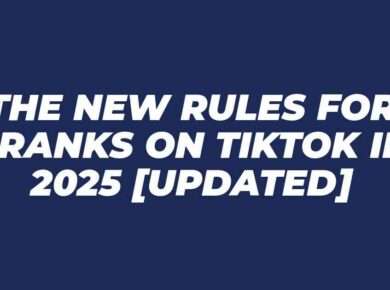As brands navigate the evolving world of influencer marketing, many are finding success by partnering with nano and micro influencers. These individuals, often with fewer than 10,000 followers, possess the ability to engage niche audiences more authentically than larger influencers. This post explores various case studies demonstrating how brands effectively harness these smaller influencers to amplify their reach and impact.
With influencer marketing projected to escalate to over $7 billion by 2024, businesses are increasingly prioritizing these partnerships. Nano and micro influencers usually have lower fees, making them a cost-effective option for brands. They foster strong connections with their followers, yielding higher engagement rates. Through this article, you’ll discover notable examples of brands like Glossier and Fashion Nova that have successfully collaborated with nano influencers, resulting in substantial growth and engagement.
By examining these case studies, you’ll gain valuable insights into strategic approaches brands are taking. Whether you’re a marketer seeking inspiration or a brand looking to explore influencer partnerships, this post offers a wealth of information to guide your journey. For those interested in diving deeper, check out our guide on how to become a social media influencer in 2025.
Understanding Nano and Micro Influencers
Influencer marketing has transformed the way brands engage with audiences, and at the forefront of this shift are nano and micro influencers. Defined primarily by their follower counts, these influencers present unique opportunities for brands looking to foster genuine connections.
Defining Nano and Micro Influencers
Nano influencers typically have between 1,000 to 10,000 followers, while micro influencers range from 10,000 to 100,000 followers. The key distinction lies not just in their follower counts but also in the level of engagement they generate. While traditional influencers often command larger audiences, their engagement rates tend to dilute as follower numbers increase. In contrast, nano and micro influencers maintain a closer relationship with their followers, resulting in higher levels of trust and higher engagement rates. This dynamic can amplify a brand’s message more effectively than relying solely on macro or mega influencers. For a deeper insight, check out the article on Types of Social Media Influencers.
Characteristics of Successful Partnerships
Working with nano and micro influencers offers several advantages for brands:
- Trust: Followers view these influencers as relatable and authentic, enhancing the credibility of the brand message they communicate.
- Authenticity: Unlike larger influencers who may be seen as commercialized, nano and micro influencers often share personal experiences, making their endorsements feel more genuine.
- Niche Engagement: Many nano and micro influencers carve out specific niches. This allows brands to target particular demographics effectively, ensuring that their marketing efforts reach the right audience.
Brands can leverage these characteristics to craft campaigns that resonate deeply. The intimate nature of these influencers’ relationships fosters communities where followers are more likely to engage with the brand. As noted in the guide on Why Nano and Micro-Influencers Are Integral to Your Marketing Strategy, these influencers often see their communities as trusted friends, making brand collaborations feel less like advertisements and more like personal recommendations.
The power of nano and micro influencers lies in their ability to resonate with their communities. As brands embrace these partnerships, they can expect not just reach but meaningful engagement that drives results.
Case Study: Fashion Nova
Fashion Nova has captivated the fashion world by utilizing innovative marketing strategies, particularly through collaborations with nano and micro influencers. This section explores the campaign overview, strategy, results, and key takeaways from Fashion Nova’s successful influencer partnerships.
Campaign Overview and Strategy
Fashion Nova aimed to enhance brand visibility and drive sales by engaging a diverse array of influencers. The brand’s primary goal was to connect with younger consumers who actively seek fashionable yet affordable clothing options. To achieve this, Fashion Nova devised a multi-faceted strategy centered on micro and nano influencers, who resonate effectively with niche audiences.
The approach involved several key components:
- Diverse Influencer Selection: The brand enlisted a mix of influencers, not only in terms of follower count but also in audience demographics. This variety allowed Fashion Nova to reach different segments of the market and showcase their clothing in authentic settings.
- User-Generated Content (UGC): By encouraging influencers to share their personal experiences wearing Fashion Nova outfits, the brand created a pool of UGC that built community and trust. This content often featured real customers, making it relatable and appealing to potential buyers.
- Exclusive Offers and Promotions: Collaborating influencers were given special discounts or featured deals to share with their followers. This tactic incentivized followers to make purchases, adding a sense of urgency and exclusivity.
- Consistent Engagement: Fashion Nova maintained regular interactions with its influencer partners, evolving campaigns based on feedback and analytics to optimize performance continuously.
Such strategic planning not only amplified the brand’s reach but also solidified Fashion Nova’s position as a powerhouse in the fast-fashion industry. For more insights into their strategies, explore this Fashion Nova marketing strategy case study.
Results and Key Takeaways
The impact of Fashion Nova’s influencer marketing initiatives can be measured by several key metrics:
- Sales Growth: Following their influencer campaigns, Fashion Nova reported significant increases in sales, with estimates suggesting a rise in revenue exceeding $1 billion annually. The brand’s ability to attract younger consumers directly contributed to this growth.
- Engagement Rates: Influencer posts featuring Fashion Nova achieved higher engagement rates compared to traditional marketing methods. Many micro influencers reported engagement rates upwards of 7%, a stark contrast to the industry average of 1-3% for larger influencers.
- Brand Awareness: The collaboration with influencers enhanced brand recognition across social platforms, particularly Instagram. Fashion Nova quickly became a household name in fashion, largely credited to influencer endorsements that felt more authentic and relatable.
- Community Building: Through their influencer partnerships, Fashion Nova cultivated a dedicated community of followers who actively engaged with the brand’s content. The authenticity of these connections led to increased customer loyalty and repeat purchases.
These results underscore the power of influencer marketing, especially when engaging smaller influencers who can forge genuine connections with their audiences. To explore further case studies on influencer marketing, check out the analysis on the greatest example of influencer marketing on Instagram.
Case Study: Glossier
Glossier, a renowned beauty brand, has effectively harnessed the power of nano influencers to build its community and drive sales. The company recognizes that trust and relatability are key to resonating with its audience. By engaging nano influencers, Glossier has successfully crafted campaigns that feel organic, authentic, and engaging. This section explores Glossier’s campaign strategy and its impact on sales and brand loyalty.
Campaign Strategy and Execution
Glossier’s approach to influencer marketing is rooted in community engagement. The brand identifies and collaborates with nano influencers who align with its ethos and whose followers share similar values. Here’s how the strategy unfolds:
- Targeted Influencer Selection: Glossier carefully selects influencers who genuinely love their products. This ensures that the promotions appear genuine and resonate with the influencer’s audience. The brand prioritizes influencers who are not just followers of beauty trends but also engaged consumers of the products.
- Content Co-Creation: Instead of dictating terms, Glossier encourages influencers to create content that reflects their unique style and perspective. This collaborative approach yields authentic user-generated content (UGC) that serves as a natural extension of the influencers’ storytelling. Such content often features real customers’ experiences and relatable narratives.
- Community Engagement: The brand focuses on fostering a sense of community. By engaging with influencers who have smaller but highly engaged followings, Glossier taps into niches that are more loyal and responsive. This strategy amplifies the brand’s message while still appearing personal and relatable.
- Utilization of Social Media: Glossier capitalizes on platforms like Instagram, where visually appealing content thrives. By leveraging the aesthetics of its products through influencer promotions, the brand creates an immersive experience for potential customers.
This thoughtful engagement strategy has not only enhanced Glossier’s visibility but also strengthened the emotional ties between the brand and its consumers. For further details about their strategic approach, read about Glossier’s growth in community-driven beauty marketing.
Impact on Sales and Brand Loyalty
The results of Glossier’s influencer campaigns are noteworthy and indicate a positive trajectory for the brand. Key metrics from the post-campaign analysis shed light on the effectiveness of their strategies:
- Sales Growth: Glossier has experienced substantial sales increases, with figures reportedly growing by 600% in 2017 alone, signaling strong consumer engagement and loyalty. The blend of traditional marketing with influencer partnerships has positioned Glossier as a leader in the beauty space.
- Brand Awareness and Engagement: Posts by nano influencers generated engagement rates significantly higher than industry standards, with some reports suggesting rates upwards of 5-10%. Followers connect with these influencers on a personal level, which translates to higher interaction rates with the brand’s content.
- Customer Loyalty: Consumers have developed a strong affinity for Glossier due to its authentic marketing approach. The community-driven focus has fostered a loyal customer base that advocates for the brand on various platforms, leading to repeat purchases and positive word-of-mouth referrals.
- Direct Feedback Mechanism: Glossier’s engagement with nano influencers allows for immediate customer feedback, informing product development and marketing strategies. This responsive approach strengthens brand loyalty as consumers feel heard and valued.
These metrics demonstrate how Glossier’s influencer marketing efforts have not only driven sales but also cultivated a dedicated community. For further insights into Glossier’s marketing strategies, explore the article on how they used word-of-mouth to shake up the beauty industry.
Through effective use of nano influencers, Glossier showcases the potential of community-driven marketing. Their approach not only engages consumers but also emphasizes the importance of authenticity in the beauty industry.
Case Study: Tentree
Tentree, an eco-friendly apparel brand, has made significant strides in the influencer marketing space by strategically collaborating with nano and micro influencers. This section analyzes Tentree’s marketing goals, execution, and the measurable success it has achieved through these partnerships.
Marketing Goals and Execution
Tentree’s primary marketing goals revolved around increasing brand awareness, driving sales, and reinforcing its mission of sustainability. The brand aimed to connect with a conscious consumer base that values eco-friendly practices. To achieve this, Tentree initiated a comprehensive planning phase focusing on several key areas:
- Target Audience Identification: Tentree aimed to engage millennials and Gen Z consumers who are increasingly drawn to sustainable and ethically produced fashion. This demographic typically seeks brands that resonate with their values, such as environmental responsibility and social impact.
- Influencer Selection: The brand identified nano and micro influencers who genuinely align with its mission. Their smaller but highly engaged followings allowed Tentree to foster authentic connections. Influencers who share a passion for sustainability were prioritized, ensuring credibility in messaging.
- Content Strategy: Tentree encouraged influencers to share personal stories relating to the brand’s eco-friendly practices. This authentic storytelling approach helped the audience understand the impact of their purchasing decisions. Influencer content often showcased the act of planting trees with each purchase, creating an emotional connection with followers.
- Measurable Campaign Components: The brand implemented tools to track performance through key performance indicators (KPIs) such as engagement rates, reach, and conversions. This data-driven approach allowed Tentree to refine its strategy continually.
This meticulous planning phase enabled Tentree to resonate more effectively with its audience, reinforcing its identity as a sustainable brand in the competitive market. For an in-depth look into their marketing strategies, explore the Tentree Influencer Marketing Case Study.
Success Metrics and Outcomes
Tentree’s influencer marketing efforts yielded impressive results, showcasing the effectiveness of their strategy. Here are some key success metrics:
- Increased Reach: The influencer campaigns generated over 100 million impressions on social media platforms. This substantial reach extended Tentree’s visibility among potential customers and reinforced its brand messaging.
- Engagement and Community Growth: Influencer posts received an average engagement rate of approximately 6-8%, significantly higher than industry norms. This level of interaction indicated a strong community connection and resonated well with Tentree’s audience.
- Sales Conversion: Following the influencer partnerships, Tentree experienced a significant lift in sales, contributing to a revenue growth target aimed at $43 million. These conversions were directly tied to the influencers’ ability to convey authentic messaging and community engagement.
- Brand Positioning: Tentree’s commitment to sustainability and its effective use of influencers positioned the brand as a leader in eco-friendly fashion. The collaboration with like-minded influencers not only enhanced brand recognition but also fostered a community of loyal customers.
These outcomes highlight the potential of engaging nano and micro influencers in achieving marketing goals, particularly for brands focused on sustainability. For a detailed overview of Tentree’s performance branding study, check out Northern’s Tentree Performance Branding.
Benefits of Partnering with Nano Influencers
Partnering with nano influencers can be a transformative strategy for brands looking to maximize their marketing efforts. These influencers, with dedicated followings often under 10,000, offer unique advantages that can significantly enhance a brand’s return on investment (ROI) and elevate customer engagement.
Cost-Effectiveness and High Engagement
One of the primary benefits of collaborating with nano influencers is the cost-effectiveness they offer. Brands can access passionate audiences at a fraction of the price required for traditional influencers. Nano influencers typically charge lower fees, which opens doors for brands to allocate budgets more liberally toward multiple campaigns.
Lower costs, combined with high engagement rates, create a marketing strategy that yields impressive results. Nano influencers often achieve engagement rates exceeding 7%, compared to the mere 1-3% found among larger influencers. This higher interaction translates to greater visibility and potentially higher conversion rates. Brands can, therefore, enjoy a marketing ROI that often surpasses expectations. For more insights on how these influencers drive results, explore the article on 5 Reasons to Partner with Nano & Micro-Influencers.
Building Authentic Connections
Working with nano influencers fosters authentic connections that larger influencers may struggle to achieve. These influencers are perceived as relatable figures within their communities. Their followers are often deeply invested in their content, viewing them not just as celebrities but as friends or trusted advisors. This close relationship allows brands to form genuine relationships with potential customers through these influencers.
When nano influencers promote a product, the message resonates differently. Their endorsements often come with a personal touch, making them feel more like recommendations from a friend rather than advertisements. The authentic content they create leads to deeper customer relationships, enhancing brand loyalty. For further exploration of how these relationships play out, check out the article on What Are Nano-Influencers and Why Are They Key for Your Marketing Strategy?.
Flexibility and Innovation in Campaigns
Brands can benefit from the flexibility and innovative ideas nano influencers bring to the table. These influencers often provide feedback that can help fine-tune marketing campaigns. Due to their smaller scale, they can experiment with various content styles, themes, and approaches without the extensive logistics larger campaigns may require.
This collaborative environment allows brands to adapt their campaigns based on influencer insights rapidly. For example, if a particular type of content receives positive feedback, brands can quickly pivot to amplify that style. Such adaptability can foster creative solutions that may not have surfaced in a more traditional influencer partnership framework. The potential for innovation, therefore, becomes a key advantage in campaigns with nano influencers, contributing to their growing popularity. To dive deeper into this topic, consider the insights shared in the article on Nano-Influencers: Who They Are and Their Advantages.
Conclusion
The success of brands like Fashion Nova, Glossier, and Tentree serves as a testament to the powerful role nano influencers can play in modern marketing strategies. These partnerships not only enhance brand visibility but also foster authentic connections with niche audiences.
Brands looking to maximize their marketing investment should seriously consider integrating nano influencers into their campaigns. The case studies highlighted demonstrate how effective these collaborations can be in driving engagement and generating loyalty.
As you plan future marketing initiatives, reflect on how the intimate relationships that nano influencers maintain with their followers can align with your brand’s objectives. Engage with the insights from these examples, and explore how leveraging the authenticity and trust associated with nano influencers can elevate your marketing efforts. For further reading on measuring the effectiveness of influencer partnerships, refer to our guide on a beginner’s guide to measuring ROI in influencer campaigns.






